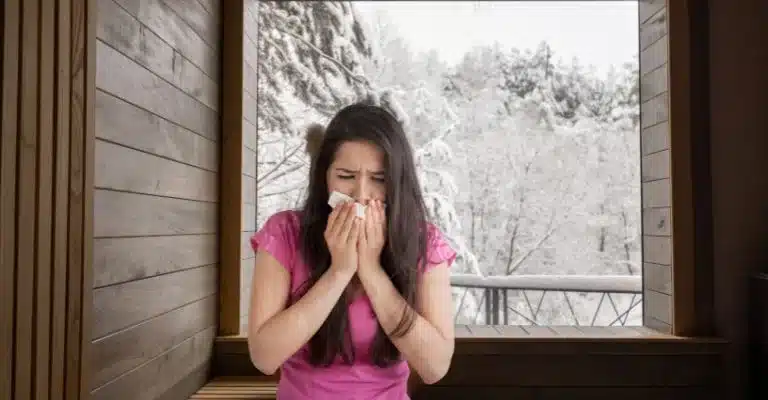Does having saunas help get rid of colds & flu?
Explore the query: ‘Does having saunas help get rid of colds & flu?‘ Uncover the relationship between saunas and these illnesses, discovering their potential impacts on symptoms and immune response. Learn more about saunas’ role in managing colds and flu effectively.
Saunas can help alleviate cold and flu symptoms by boosting the immune system and providing respiratory benefits, but they should be used with caution and in conjunction with other treatments.
Overview of the benefits of saunas
Saunas offer a range of health benefits beyond just relaxation. They can help to lower blood pressure, improve circulation, and promote detoxification by stimulating sweating. It has also been shown to help with pain relief and muscle relaxation, making it a popular choice for athletes and those with chronic pain conditions.
Does having saunas help get rid of colds & flu?
While saunas may offer some temporary relief from cold and flu symptoms, they shouldn’t be considered a primary treatment. It’s important to stay hydrated, get plenty of rest, and consult with your doctor if your symptoms are severe or don’t improve within a few days.
Saunas can help alleviate cold and flu symptoms by creating a warm and humid environment that can help to open up the airways and clear congestion. The heat can also help to stimulate the immune system, which can help the body fight off the infection.
How saunas can boost the immune system
Saunas can help to boost the immune system by inducing a temporary state of fever in the body. This fever-like state can trigger the release of white blood cells, a crucial part of the immune system that helps fight infections.
The heat of the sauna can also help to increase blood flow and circulation, which can help to distribute these white blood cells throughout the body more efficiently.
Overview of the respiratory benefits of saunas
Saunas offer a range of respiratory benefits that can be particularly helpful during cold and flu season. A sauna’s heat and humidity can help open up the airways, making breathing easier and reducing congestion.
It can be especially helpful for those suffering from respiratory infections like colds and cases of flu, which can cause inflammation and narrowing of the airways.
Further, saunas can help to improve lung function by increasing circulation and promoting deeper breathing. This can be especially helpful for those with chronic respiratory conditions like asthma or chronic obstructive pulmonary disease (COPD). Overall, regular sauna use promotes better respiratory health and makes breathing easier.

Types of Saunas for Colds and Flus
- Traditional Finnish saunas are the most common sauna, using dry heat to warm the body. These saunas typically have temperatures between 80 and 100 degrees Celsius and low humidity levels, making them a good option for those who prefer drier heat. Finnish saunas have been shown to improve cardiovascular health and may help to reduce the risk of respiratory diseases.
- Infrared saunas use infrared radiation to heat the body rather than traditional heating elements. This type of sauna is typically more relaxed than a Finnish sauna, with temperatures ranging from 50 to 60 degrees Celsius. Infrared saunas are thought to have various health benefits, including improved circulation, pain relief, and detoxification.
- Steam rooms use moist heat to warm the body, with temperatures typically ranging from 40 to 50 degrees Celsius and high humidity levels. Steam rooms can help clear congestion and reduce inflammation, making them a good option for those with respiratory infections. They may also help to improve skin health and promote relaxation.
Which type of sauna is best for treating colds and cases of flu
While there is no “best” type of sauna for treating colds and cases of flu, steam rooms may be accommodating for alleviating symptoms. The moist heat of a steam room can help reduce congestion and loosen mucus, making breathing easier. The high humidity levels in a steam room can also help to soothe irritated respiratory passages and promote relaxation.
That being said, Finnish and infrared saunas may also help treat colds and cases of flu. Finnish saunas have been shown to improve cardiovascular health and may help to reduce the risk of respiratory diseases. Infrared saunas are thought to have various health benefits, including improved circulation, pain relief, and detoxification. Read from MYTIMES post about |Sauna Can Relieve Cold Symptoms” Check Here.
Precautions When Using Saunas for Colds and Flus
While saunas can help alleviate cold and flu symptoms, it is essential to take certain precautions to ensure they are used safely. The important safety tips to keep in mind when using saunas for colds and cases of flu:
- Stay hydrated: Saunas can cause you to sweat and lose fluids, so it is essential to drink plenty of water before, during, and after your sauna session to prevent dehydration.
- Limit your time: It is important not to stay in the sauna for too long, as this can increase your risk of dehydration and other health problems. Most experts recommend limiting sauna sessions to 10-15 minutes at a time.
- Avoid alcohol and drugs: Using saunas while under the influence of drugs or alcohol can be dangerous, as it can increase your risk of dehydration and other health problems.
- Take breaks: After a sauna session, it is essential to take a break and cool down before entering another sauna or engaging in other physical activities.
- Listen to your body: If you feel dizzy, lightheaded, or otherwise unwell during a sauna session, it is essential to stop and cool down immediately.
[wps_youtube url=”https://youtu.be/66RReoRKxSA” responsive=”yes” autoplay=”yes”]
Potential risks of using saunas when sick
While saunas can help alleviate cold and flu symptoms, there are also potential risks associated with using them when sick. Here are some chances to keep in mind:
- Dehydration: Saunas can cause you to sweat and lose fluids, leading to dehydration. When you are sick, your body may be more susceptible to dehydration, so staying hydrated and limiting your sauna time is essential.
- Overheating: When you have a fever or other symptoms of illness, your body is already working hard to regulate its temperature. Using a sauna can cause your body temperature to rise further, which can be dangerous and lead to heat exhaustion or heat stroke.
- Spreading germs: Saunas are often communal spaces, which means you could extend your illness to others if you use a sauna when sick.
- Interference with medication: Some medications can be affected by heat, and using a sauna when sick could interfere with their effectiveness.
- Worsening symptoms: While saunas can help alleviate cold and flu symptoms, they may also exacerbate others, such as congestion or respiratory issues.
Alternatives to Saunas for Colds and Flus
While saunas can be a helpful tool for relieving cold and flu symptoms, they are not the only option available. There are several other treatments and remedies that individuals can use to alleviate their symptoms and promote recovery. For example, drinking plenty of fluids can help keep the body hydrated and flush out toxins, while rest and sleep can provide the body with the energy it needs to fight illness.
Over-the-counter medications like pain relievers, decongestants, and cough suppressants can also help alleviate symptoms, although they should be used cautiously and according to package instructions.
Alternative treatments instead of saunas
While saunas can effectively treat colds and flu, there are some cases where alternative treatments may be more appropriate. For example, individuals sensitive to heat or with certain medical conditions like heart disease or respiratory issues may need to avoid saunas altogether.
Other factors to consider when deciding whether to use a sauna or alternative treatments include the individual’s overall health, lifestyle habits, and personal preferences. Ultimately, the best approach will depend on the individual’s unique circumstances, and it is essential to consult a healthcare provider before beginning any new treatment plan.
How Often to Use Saunas for Colds and Flus
When using saunas to treat colds and cases of flu, it’s essential to avoid overdoing it. While regular sauna use can benefit overall health and wellness, using saunas too frequently when sick can worsen symptoms or prolong recovery time.
As a general guideline, it is recommended to limit sauna use to once or twice a week, with sessions lasting at most 20-30 minutes. It’s also important to stay well-hydrated and listen to your body’s signals to avoid pushing yourself too hard.
Visit For more reading about Healing in Style by Hot Tub Patio and more information about Saunas.
Final Words:
Saunas have shown potential in helping to alleviate symptoms of colds and flu. By promoting relaxation, boosting the immune system, and improving respiratory function, saunas may be a helpful addition to one’s cold and flu treatment plan. However, using saunas safely and following recommended guidelines is essential to avoid potential risks and complications.
As with any treatment option, it’s also necessary to consult with a healthcare provider before using saunas for colds and flu, particularly if you have any underlying health conditions or concerns.
Common Queries:
[wps_faq style=”classic” question=”Can saunas cure colds and cases of flu?”]No, saunas cannot cure colds and cases of flu. However, they may help alleviate symptoms and support the body’s healing process.[/wps_faq]
[wps_faq style=”classic” question=”How often should I use a sauna when treating a cold or flu?”]Limiting sauna use to once or twice a week is generally recommended, with sessions lasting at most 20-30 minutes. It’s also important to listen to your body and avoid overdoing it, particularly if you feel weak or tired.[/wps_faq]
[wps_faq style=”classic” question=”Are there any risks associated with using saunas for colds and flu?”]Yes, there are potential risks associated with sauna use, particularly if you have underlying health conditions such as heart disease, low blood pressure, or respiratory problems. It’s important to follow recommended guidelines for safe sauna use and consult with a healthcare provider before using saunas for colds and flu.[/wps_faq]
[wps_faq style=”classic” question=”Can children use saunas to treat colds and flu?”]It’s generally not recommended for children under 12 to use saunas, as their bodies may not be able to regulate heat as effectively as adults. It’s essential to consult with a pediatrician before using saunas for colds and flu in children.[/wps_faq]
[wps_faq style=”classic” question=”Are there any alternative treatments for colds and flu besides saunas?”]Yes, many alternative treatments may be effective in alleviating cold and flu symptoms, such as rest, hydration, over-the-counter medications, and natural remedies like herbal teas and essential oils.[/wps_faq]











